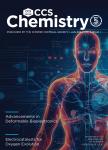Antimicrobial Rubber Nanocapsule-Based Iodophor Promotes Wound Healing
作者机构:Department of ChemistryRenmin University of ChinaBeijing 100872China Department of Burns and Plastic SurgeryBeijing Jishuitan HospitalBeijing 100035China
出 版 物:《CCS Chemistry》 (中国化学会会刊(英文))
年 卷 期:2020年第2卷第2期
页 面:245-256页
基 金:the National Natural Science Foundation of China(21825503 and 21674127).
主 题:iodine doping antimicrobial rubber nanocapsules iodophor wound healing
摘 要:Povidone–iodine has been leading the market of clinical disinfectants worldwide since the last century but has turned a blind eye to its cytotoxic effect on the cells of the human tissue.In this study,a commercial povidone–iodine,though considered an excellent antibacterial agent,was found to have a negative influence on mammal cell growth and wound healing in preclinical trials.At the early stage of wound treatment,it even severely deteriorated the wound and enlarged the wound area.However,our newly formulated iodophors,based on rubber nanoparticles,were able to discriminate between human and bacterial cells by inhibiting the cytotoxicity damage caused by iodine to mammalian tissue and vigorously,killed the bacterial cells,thereby,presenting as superior performers of wound care,compared with povidone–iodine.Wetook advantage of a redox combination of an emulsion complex loaded with iodine to solidify a trans-polyisoprene rubber into nanocapsules.Specifically,our fabricated class of rubber nanocapsules proved to be capable of promoting remarkable cell proliferation and wound recovery,thereby,serving as a promising candidate for biocompatible and healing-favored wound disinfection agents in place of povidone–iodine.



